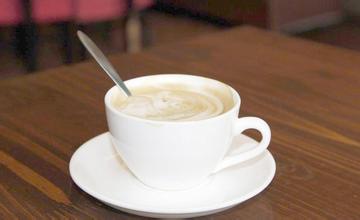Does coffee lace milk bubble make a lot of bubbles in milk?-the standard of coffee lace to milk.
Is coffee milk bubble a lot of bubbles?- Coffee pull flower to milk standard
flower cup
Milk: The milk used in latte drinks has a fat content of about 3%. The less fat, the harder the foam. And you want smooth foam (so forget fat-free cappuccino).
About frothing: The main thing to keep in mind when frothing is to stop when the temperature reaches the right point. The appropriate temperature is 55 - 65°C, depending on your taste. Too much frothing can curdle milk and change its texture (and cappuccino can be too hot). Overheated milk can also make the foam too hard. How different is the foam? Here are some typical examples:
Foaming: If you are distracted or unfocused while frothing, it is easy to cause the steam pipe to be above the surface of the milk rather than just below it. The result of this is splashing milk and producing larger milk bubbles. Of course you still get a lot of foam in the pull cup, but it will taste bad.
Too hard: hard foam looks stiff and when you pour it into coffee it doesn't mix with the coffee, but instead accumulates on top of your coffee like fluffy beaten cream. If beaten a little longer, it would be stratified, 90% runny milk, and a thick hard foam lid floating on top. When you pour it into your coffee, the milk comes out of the cup first, and you have to scoop the foam into the cup with a spoon.
Smoothness: If you do everything right, the milk looks smooth and creamy when you pour it out, a bit like yogurt. The milk and your espresso blend perfectly together, and crema colors the surface of the milk, creating the typical brown edge of cappuccino.
Re-beaten milk also often produces hard foam. The trick is to produce the right amount and quality of foam in the pull cup at the right temperature. To foam well, you have to know how fast your machine heats the amount of milk you want.
A good tip is to start frothing by not serving less than two cappuccinos at a time.
About the steam in the coffee machine:

Important Notice :
前街咖啡 FrontStreet Coffee has moved to new addredd:
FrontStreet Coffee Address: 315,Donghua East Road,GuangZhou
Tel:020 38364473
- Prev

What is the concentration of milk in coffee pull?-the standard of coffee pull to milk.
What is the concentration of coffee brocade milk-Coffee brocade milk standard fat content: fat free milk < 0.5% milk foam characteristics: the proportion of milk bubbles is the most, texture is rough, taste is light blistering size: large fat content: low fat milk 0.5-1.5% milk foam characteristics: medium foam proportion, smooth texture, heavy foaming size: medium fat content: full fat milk > 3% milk foam size
- Next

Video tutorial for beginners in foam-how to do well in video tutorial
Video tutorial for beginners on how to make a good foam-the first step is to do a fast and low hit until there is obvious resistance and a sense of consistency; then you do a medium hit, and you also have an obvious sense of resistance and a sense of consistency; finally, you do a high hit and there is a sense of resistance and a sense of continuity as a whole. Tip: pay attention to the height of the twitch. Step 2: repeat the first step. In this way, the process of manual milking is completed. If you want to
Related
- What is the meaning of lactic acid fermentation with coffee bean treatment?
- How to judge the state of foam by sound?
- How does the latte pull out the unicorn pattern? Come to get for a little trick to improve the flower pull!
- Will flower pulling affect the taste of the latte?
- Do you know the history of coffee?
- The difference between honey treatment and sun washing what is raisin honey treatment?
- What kind of milk can a novice use to make coffee foam to keep the foam longer? The correct method and skills of milking tutorial sharing
- Why do washed coffee beans taste sour? Flavor characteristics of washed Coffee
- Introduction to the skill of how to practice the size and height of water injection around the circle of hand-brewed coffee
- How do beginners practice coffee flower drawing from scratch?

